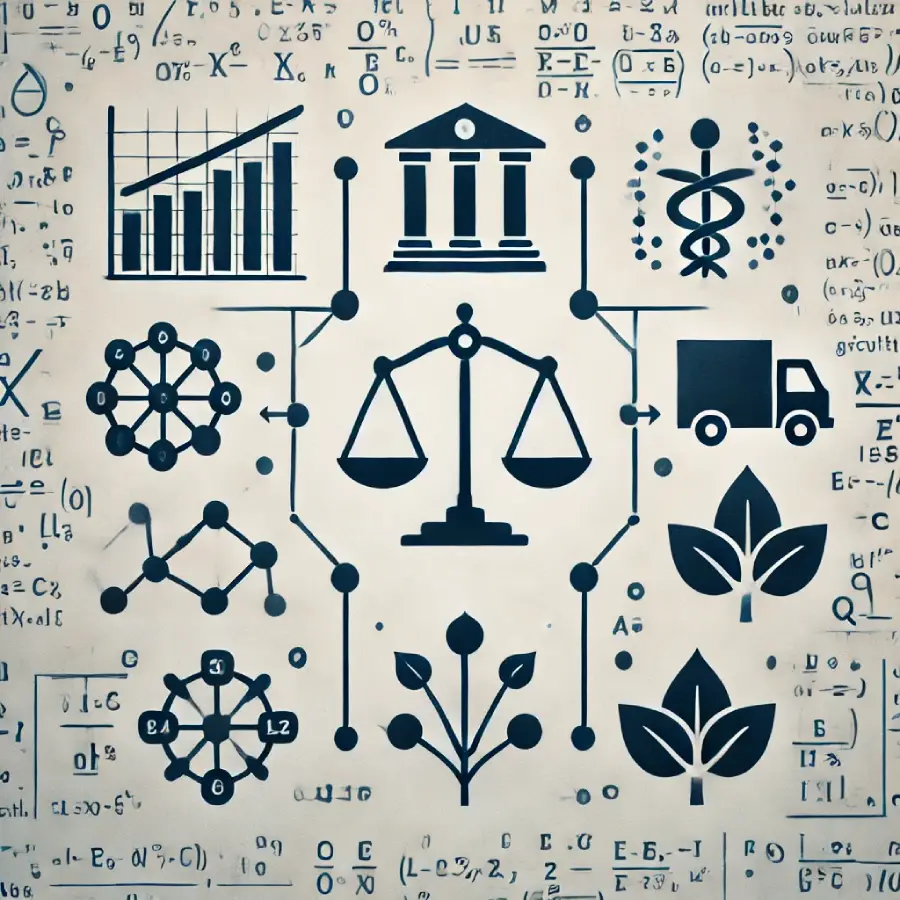Exercise
A course in Economics is jointly taught to students from the Economics, Law, and Agriculture departments. Among the students enrolled in this course, 65% are from the Economics department, 20% are from the Law department, and 15% are from the Agriculture department. Of the enrolled students, 25% from the Economics department, 63% from the Law department, and 23% from the Agriculture department take the exam during the June session.
Calculate the following:
1. The probability that a randomly selected student will take the exam in June.
2. Given that a student takes the exam in June, calculate the probability that the student is from the Economics department.
3. Given that a student takes the exam in June, calculate the probability that the student is from the Law department.
4. Given that a student takes the exam in June, calculate the probability that the student is from the Agriculture department.
Solution
Let’s solve this step by step.
Step 1: Calculate the probability that a randomly selected student will take the exam in June.
Let \( P(E) \), \( P(L) \), and \( P(A) \) represent the probability that a randomly selected student is from the Economics, Law, and Agriculture departments, respectively. These are given as:
\[
P(E) = 0.65, \quad P(L) = 0.20, \quad P(A) = 0.15
\]
Let \( P(J|E) \), \( P(J|L) \), and \( P(J|A) \) represent the probability that a student from the Economics, Law, and Agriculture departments, respectively, will take the exam in June. These are given as:
\[
P(J|E) = 0.25, \quad P(J|L) = 0.63, \quad P(J|A) = 0.23
\]
The total probability that a randomly selected student will take the exam in June, \( P(J) \), is calculated using the law of total probability:
\[
P(J) = P(J|E)P(E) + P(J|L)P(L) + P(J|A)P(A)
\]
\[
P(J) = (0.25 \times 0.65) + (0.63 \times 0.20) + (0.23 \times 0.15)
\]
\[
P(J) = 0.1625 + 0.126 + 0.0345 = 0.323
\]
So, the probability that a randomly selected student will take the exam in June is 0.323.
Step 2: Calculate the probability that a student who takes the exam in June is from the Economics department.
We use Bayes’ theorem to find the conditional probability:
\[
P(E|J) = \frac{P(J|E)P(E)}{P(J)}
\]
\[
P(E|J) = \frac{0.25 \times 0.65}{0.323} = \frac{0.1625}{0.323} \approx 0.5031
\]
So, the probability that a student who takes the exam in June is from the Economics department is approximately 0.5031.
Step 3: Calculate the probability that a student who takes the exam in June is from the Law department.
Similarly, using Bayes’ theorem:
\[
P(L|J) = \frac{P(J|L)P(L)}{P(J)}
\]
\[
P(L|J) = \frac{0.63 \times 0.20}{0.323} = \frac{0.126}{0.323} \approx 0.3901
\]
So, the probability that a student who takes the exam in June is from the Law department is approximately 0.3901.
Step 4: Calculate the probability that a student who takes the exam in June is from the Agriculture department.
Again, using Bayes’ theorem:
\[
P(A|J) = \frac{P(J|A)P(A)}{P(J)}
\]
\[
P(A|J) = \frac{0.23 \times 0.15}{0.323} = \frac{0.0345}{0.323} \approx 0.1068
\]
So, the probability that a student who takes the exam in June is from the Agriculture department is approximately 0.1068.
Summary of Answers:
1. The probability that a randomly selected student will take the exam in June: 0.3230
2. The probability that a student who takes the exam in June is from the Economics department: 0.5031
3. The probability that a student who takes the exam in June is from the Law department: 0.3901
4. The probability that a student who takes the exam in June is from the Agriculture department: 0.1068

